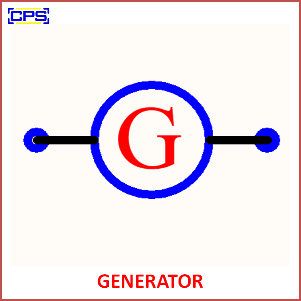A generator is a device that converts mechanical energy into electrical energy using the principle of electromagnetic induction. It is widely used to produce electricity for various applications, ranging from small-scale portable generators to large-scale power plants.

Key Features of a Generator:
- Principle:
- Operates based on Faraday’s Law of Electromagnetic Induction, which states that a voltage is induced in a conductor when it moves through a magnetic field.
- Components:
- Rotor (Armature): The rotating part that produces relative motion between the conductor and the magnetic field.
- Stator: The stationary part containing the magnetic field or the coils where the current is induced.
- Prime Mover: Provides the mechanical energy, such as an engine, turbine, or hand crank.
- Commutator or Slip Rings: Transfers the generated current to the external circuit.
- Types of Generators:
- AC Generator (Alternator): Produces alternating current.
- DC Generator: Produces direct current.
Applications:
- Power Generation: Supplies electricity for homes, industries, and businesses.
- Backup Power: Provides emergency power during outages.
- Portable Devices: Powers tools and equipment in remote areas.
- Renewable Energy Systems: Converts energy from wind, water, or steam into electricity.
Generators are essential for converting mechanical energy into a usable electrical form, making them crucial in modern power systems and various industries.
